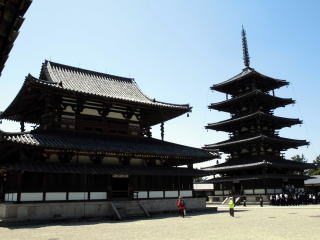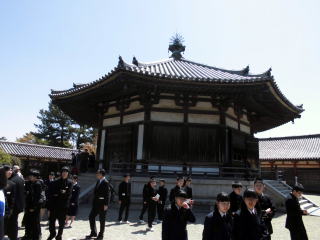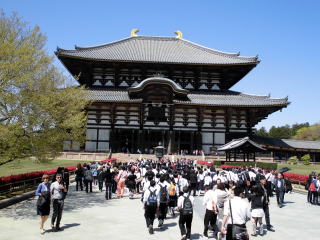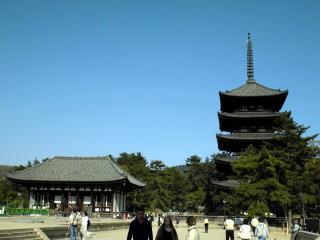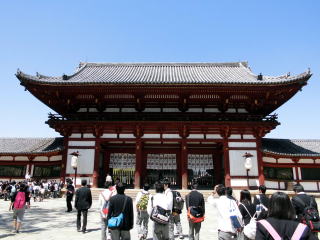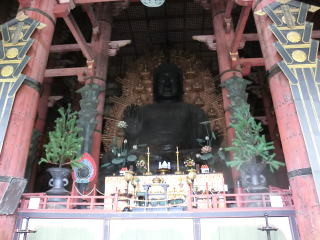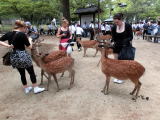NARA, FIRST CAPITAL OF JAPAN
Nara is is located south of Kyoto and the capital city of Nara prefecture
with 365 thousand
inhabitants. We get there from Kyoto and Osaka by train of JR or Kintetsu
private line
in an hour. In Japan each emperor had changed its political seat before
Nara period.
Then, HEIJOKYO (Nara) was constructed modeling after the Chinese capital as the first
capital on 710. During Nara period from 710 and 784 AD Buddhism flourished
very much
and came to its peak. What's more, it did not suffer any American air raid
as well as Kyoto
during Second World War.
Accordingly there are still many old temples and shrines of 8th century
inside and around.
In the city you also see many wild deers which people respect as messenger
of God.
In this way Nara has been keeping a calm and traditional atmosphere as one of the oldest
cities to date.

HORYUJI temple is not only one of seven major temples in Nara area but
also very precious
art treasure in Japan. The temple boasts the oldest wooden buildings in the world and
was registered as world heritage by UNESCO first in Japan.
The inscription of golden Yakushi Nyorai (Buddha image) indicates that
HORYUJI temple was
firstly constructed in the beginning of 7th century by Empress SUIKO and
reconstructed late
7th century after it suffered fire, meanwhile the exact year of its construction has not been
confirmed yet. However principal buildings were certainly built in seventh century.
3, HORYUJI Buddhist Temple
Nandaimon gate
Kondo, golden temple at left and five story
pagoda at right constructed in seventh century
Yumedono , vision temple of eighth century
Daikokudo, big auditorium
Nannendo hall , which was constructed in 813,
has been reconstructed four times afterwards.
Golden oriental hall , Higashi-Kondo
at left and five story pagoda at right
The great image of Buddha of copper
The wooden pavilion of Daibutsudo
KOFUKUJI Buddhist temple was founded in 669 for the Fujiwaras, the most influential
aristocrat in the imperial court, and was moved to Nara in 710
Higashi-Kondo (hall) and golden oriental pavilion, which were constructed
in 726,
only remain intact among all the buildings at the temple.
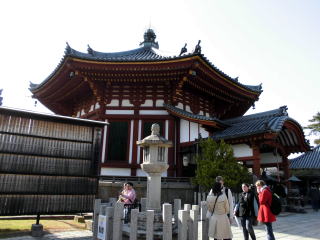
TODAIJI Buddhist temple was the center of Buddhism of eighth century.
Daibutsudo wooden pavilion was completed together with great image of Buddha
in 751
and its inauguration ceremony was held with many foreign Buddhist priests
in 752.
It is said that 2.3 million people out of 6 million ,all the population
at that time, took part in
its construction project voluntarily. Afterwards the pavilion and the great
image were burned
down three times and finally reconstructed in 18th century.
Though the pavilion was reduced to two thirds of the original size, it
is still the biggest
wooden building in the world. The current pavilion is 49.1m high, 57m wide and 50.5m deep.
The great image of Buddha weighs 380 ton with 18m of height including 3m of pedestal.
The inner gate to the sanctuary
The front gate of TODAIJI temple, Nandaimon gate.
2, KOFUKUJI Buddhist Temple
1, TODAIJI Buddhist Temple
Some foreign tourists feed deers in a park
near KOFUKUJI temple.


